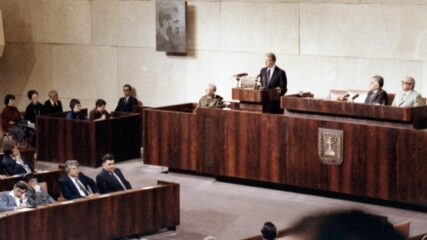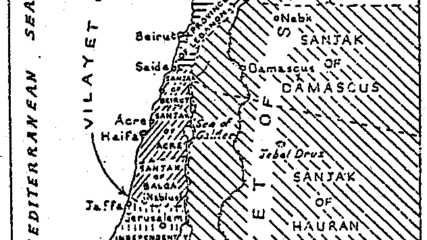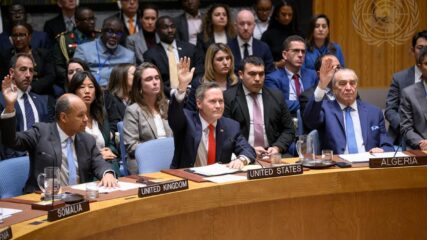April 15, 1936
Ten cars are attacked in what appeared to be a robbery near Tulkarm in which three Jews were killed. The following day, members of the underground military group Irgun fatally shoot two Arabs connected to the attack. The events quickly escalate as Arab workers go on a six-month strike and violence erupts across British-ruled Palestine.
Five major outcomes result from the Arab Rebellion that affect the eventual development of the State of Israel. First, in an attempt to find conciliation between Arabs and Jews in Palestine, the British recommend a partition plan — the creation of two states for two peoples — for the first time in 1937 with the recommendations of the Peel Commission report. The Peel review process brings about a temporary pause in the rebellion. After the rejection of the Peel recommendations, the rebellion resumes in earnest with a renewed emphasis on terrorism against the British and Jews. The fighting continues until 1939.
The second major outcome is the consolidation of power by the Mufti of Jerusalem, Hajj Amin al-Husseini. Ten days after the incident in Tulkarm, the Mufti forms the Arab Higher Committee out of competing Arab political parties. The Mufti and the Arab Higher Committee direct all components of the rebellion, including worker strikes, nonpayment of taxes and violence.
Third, for the first time, surrounding Arab countries intervene at the behest of the British to ask for an end to the violence, albeit their influence aims to further their own national interests in bettering relations with London. The precedent of Arab state involvement in Palestinian affairs continues well after the establishment of the State of Israel in 1948.
Fourth, the Arab rebellion against the British and Zionists leaves the Arab economy in shambles. Arab terrorists steal from the village peasantry, disrupt agricultural seasons and confiscate harvests. The rural Palestine economy does not recover from the devastation caused by the rebellion, and politics and political decision-making fall to the wealthier urban elites, led by the Mufti and his followers.
Finally, the rebellion leads to a shift in British policy away from supporting the establishment of a Jewish national home in Palestine and toward Arab interests. The result is the 1939 White Paper, which effectively shuts off Jewish immigration, threatens to but does not end Jewish land acquisition, and promises an independent, unitary, Arab-majority state in Palestine within 10 years.









